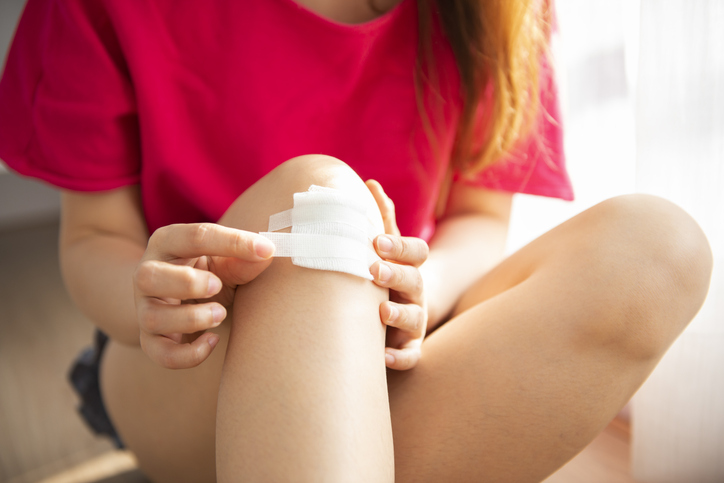Whether it’s a minor cut or a more serious injury everyone has sustained a wound at some point in their life. Each time we develop a break in our skin our bodies go through a wound healing process to repair the damage, but how does this happen?

When the skin is injured, our body sets into motion an automatic series of events, often referred to as the “cascade of healing,” in order to repair the injured tissues. The cascade of healing is divided into these four overlapping phases:
Phase 1: Stop the bleeding (hemostasis)
The first stage of wound healing is for the body to stop the bleeding. This is called hemostasis or clotting and it occurs within seconds to minutes after you suffer a wound. During this phase the body activates its emergency repair system to form a dam to block the drainage and prevent too much blood loss. Clotting also helps to close and heal the wound, making a scab.
Phase 2: Scabbing over
Once your wound isn’t bleeding any more, the body can begin cleaning and healing it. First, the blood vessels around the wound open a bit to allow more blood flow to it. Fresh blood brings more oxygen and nutrients to the wound. White blood cells called macrophages help clean the wound by fighting any infection. They also send out chemical messengers called growth factors that help repair the area.
Phase 3: Rebuilding
After the wound is clean and stable, your body can begin rebuilding the site. Oxygen-rich red blood cells come to the site to create new tissue. Chemical signals in the body tell cells around the wound to make elastic tissues called collagen. This helps to repair the skin and tissues in the wound. At this stage in healing, you might see a fresh, raised, red scar. The scar will slowly fade in color and look flatter.
Phase 4: Maturation (strengthening)
Even after your wound looks closed and repaired, it’s still healing – this is called the Maturation phase. During this phase the new tissue slowly gains strength and flexibility. You may also experience itching or tightness over the area at this time. This phase can last anywhere from a few weeks to months.
If you suffered a wound, you can help the healing process by thoroughly cleaning it with mild soap and water and covering it with a sterile bandage to prevent infection. See your doctor if you think your wound has become infected.
Due to a variety of underlying conditions, some people may experience slow or non-healing wounds. For those patients, Flushing Hospital Medical Center offers a Wound Care Center. Speak to you doctor to see if you require specialized wound healing services.
All content of this newsletter is intended for general information purposes only and is not intended or implied to be a substitute for professional medical advice, diagnosis or treatment. Please consult a medical professional before adopting any of the suggestions on this page. You must never disregard professional medical advice or delay seeking medical treatment based upon any content of this newsletter. PROMPTLY CONSULT YOUR PHYSICIAN OR CALL 911 IF YOU BELIEVE YOU HAVE A MEDICAL EMERGENCY.
